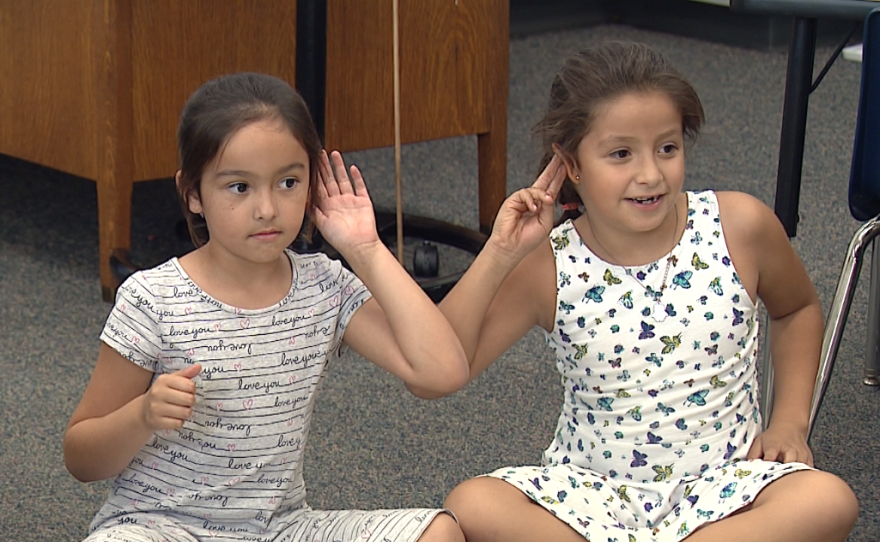There is a new routine in Ms. Carolina Calhoun’s second-grade class at Meridian Elementary School in El Cajon. After lunch, she presses play on small boombox. A man’s cheery voice sings over bouncy music.
“Let’s talk about you. Then we’ll talk about me. Be a good listener to everyone you meet.”
The students wriggle in place and perform choreographed hand movements to match the music.
Theirs is one of 490 classrooms in the Cajon Valley Union School District implementing National University’s Sanford Harmony program this year. It aims to help students deal with their and their peers’ emotions through regular activities and story time — usually signaled by the “listening” song.
More than 160 schools in San Diego County have adopted the curriculum, which National provides for free through a donation from philanthropist T. Denny Sanford. They join many others who are teaching students to understand their emotions and develop social skills like conflict resolution.
RELATED: What It Means When San Diego Educators Talk About ‘Supporting The Whole Child’
A national panel of education, psychology and neuroscience researchers this month called on all schools to adopt so-called social-emotional learning programs. The group, assembled by nonpartisan think tank The Aspen Institute, looked at the available research and said: “the success of young people in school and beyond is inextricably linked to healthy social and emotional development.”
“Studies have shown through social-emotional learning programs — and through Sanford Harmony — that empathy goes up, aggression goes down, and math and reading scores go up,” said National University Vice Chancellor Chris Graham. “And classroom management, less time is spent with the teachers doing that.”
Meridian Principal Ryan Satterfield said, five weeks into the program, teachers are having to spend less time managing conflicts.
“Foursquare gets pretty heated out there and arguments are settled with a quick push, where now they’re given the language to communicate effectively, strategies to resolve the conflicts they have,” Satterfield said.

Students are learning to recognize emotions, anticipate reactions by their peers and ask questions to diffuse situations. Take the recent picture book Calhoun read to her students. The main character was disappointed when her plan for show-and-tell did not work out.
RELATED: Dalai Lama In San Diego: Modern Education Needs To Focus On Compassion
“And from her body language, can you see that it went from (her) standing up nice and tall to her shoulders kind of hunched over?” Calhoun said to the students. “We need to pay attention to body language, don’t we?”
Assistant Superintendent Karen Minshew said she jumped at the chance to bring the free curriculum to her schools. She said they are skills students will need in their future workplaces, but also right now. El Cajon is home to a diverse community of immigrants and refugees.
“We want kids to have intentional conversations with each other and to build that empathy and to really understand who’s in my classroom,” Minshew said.
Cajon Valley plans to measure its outcomes at the end of the year, but Satterfield said he is looking forward to expanding the program to more grade levels.
“It is a way to naturally give a framework to the things that teachers are already doing, but it gives equity across classrooms,” he said. “And it gives us consistency in the language that we’re using with students and the way that students are speaking to each other.”






